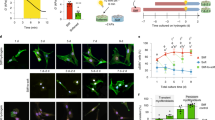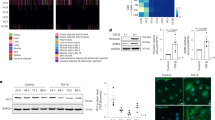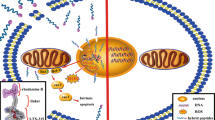Abstract
Data from many somatic cell fusion experiments support the notion that the cytoplasm of eukaryotic cells contains elements which can alter gene expression and replication1. More definitive evidence is perhaps lacking because the cell hybrids studied were complex cells comprising mixed genomes, frequently undergoing chromosomal losses and other aberrations, within mixed cytoplasms. Such problems have been alleviated by the development of the techniques of cybridisation, red cell-mediated microinjection and nuclear transplantation2. Using this last technique, we showed that up to 40% of a monolayer culture of cytoplasts could be renucleated to form whole viable cells3,4. Because of the high efficiency of fusion and the purity of cytoplast and karyoplast cultures used, large quantities of true cytoplasmic–nuclear hybrid cells suitable for immediate morphological and biochemical analysis could be formed. Here we describe the application of the technique to an investigation of the effects of rat liver cytoplasm on gene expression by mouse fibroblast nuclei. We show that the synthesis of mouse tryosine amino transferase (TAT)—a liver-specific enzyme never detected in the fibroblast cell line was induced in hybrids constructed by transplantation of mouse (A9) fibroblast nuclei into rat liver (HTC) cytoplasts. Furthermore, as occurs in the rat cell line, its activity was modulated by addition of the synthetic corticosteroid, dexamethasone. Clearly, this hybrid cell system will be useful in the further characterisation and eventual isolation of the newly identified regulatory substance.
This is a preview of subscription content, access via your institution
Access options
Subscribe to this journal
Receive 51 print issues and online access
$199.00 per year
only $3.90 per issue
Buy this article
- Purchase on SpringerLink
- Instant access to full article PDF
Prices may be subject to local taxes which are calculated during checkout
Similar content being viewed by others
References
Ringertz, N. A. & Savage, R. E. Cell Hybrids (Academic, New York, 1976).
Sanford, K. K. (ed.) Natn. Cancer Inst. Monogr. 48, (1978).
Lucas, J. J. & Kates, J. R. Cell 7, 397–405 (1976).
Lucas, J. J., Zorn, G. A., Brings, A., Szekeley, E. & Kates, J. R. Natn. Cancer Inst. Monogr. 48, 37–44 (1978).
Friend, K. K., Dorman, B. P., Kucherlapti, R. S. & Ruddle, F. H. Expl Cell Res. 99, 31–36 (1976).
Thompson, E. B., Tomkins, G. M. & Curron, J. F. Proc. natn. Acad. Sci. U.S.A. 56, 296–303 (1966).
Thompson, E. B. & J. Cell Biol. 39, 921–927 (1971).
Brown, J. E. & Weiss, M. C. Cell 6, 481–494 (1975).
Diamondstone, T. I. Analyt. Biochem. 16, 395–401 (1966).
Granner, D. K. & Tomkins, G. M. Meth. Enzym. 17A, 633–637 (1972).
Lipsich, L. A. & Lucas, J. J. (in preparation).
Lipsich, L. A., Lucas, J. J. & Kates, J. R. J. cell. Physiol. 97, 199–203 (1978).
Author information
Authors and Affiliations
Rights and permissions
About this article
Cite this article
Lipsich, L., Kates, J. & Lucas, J. Expression of a liver-specific function by mouse fibroblast nuclei transplanted into rat hepatoma cytoplasts. Nature 281, 74–76 (1979). https://doi.org/10.1038/281074a0
Received:
Accepted:
Published:
Issue date:
DOI: https://doi.org/10.1038/281074a0
This article is cited by
-
Stem Cell Plasticity, Beyond Alchemy
International Journal of Hematology (2004)
-
Cytoplasmic suppression of tumor progression in reconstituted cells
Somatic Cell and Molecular Genetics (1988)
-
Symposium at the 27th Annual Meeting of the Japan Society of Human Genetics, 1982: New Genetic Techniques in Human Genetics
Japanese Journal of Human Genetics (1983)
-
RNA from rat hepatoma cells can activate phenylalanine hydroxylase gene of mouse erythroleukemia cells
Somatic Cell Genetics (1983)
-
Permeable embryonic cells of sea urchins as a model for studying nucleus-cytoplasm interactions
Experientia (1983)



